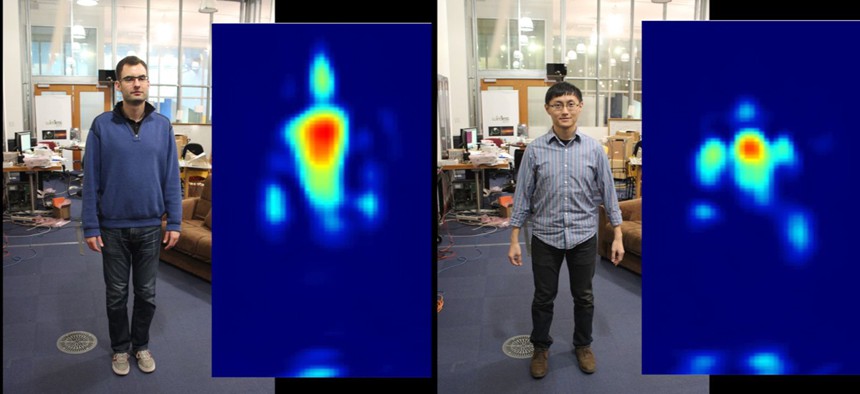MIT Researchers Develop Device That Can Identify People Through Walls

Fadel Adib/CSAIL
Paranoid about technology chipping away at our privacy? You might want to skip this article.
Paranoid about technology chipping away at our privacy? You might want to skip this article.
If all goes to plan, a product will become commercially available in 2016 that can pick up wireless reflections off the human body to see the silhouette of a person standing behind a wall. It can distinguish one person from another and even trace a person’s hand as they write in the air. And it can do this without the need for on-body sensors or in-room cameras. Getting uncomfortable yet?
The researchers, a team at MIT’s Computer Science and Artificial Intelligence Laboratory, are brimming with ideas on how the technology could be put to good use, in fields ranging from gaming and filmmaking to emergency response and eldercare.
For motion capture in today’s film industry, for instance, actors must wear markers and move in a special room full of cameras. But the new device, called RF-Capture, could track their movements even if they’re behind objects or walls.
In a smart home, it could help in adjusting heating and lighting based on inhabitants’ locations. And for eldercare, it could be part of a system that calls an emergency line when a family member has fallen unconscious. (According to MIT News, the researchers already have incorporated the technology into a spinoff product called Emerald that specifically “aims to detect, predict and prevent falls among the elderly.” It was presented to US president Barack Obama in August during Demo Day, an innovation forum hosted at the White House.)
RF-Capture works by emitting low-power radio signals that can traverse a wall and bounce off the body on the other side. The reflections are then captured by the device, which combines the information (pdf) from the multiple reflections to piece together the person’s silhouette.
Of course, more sinister applications of the technology might pop to mind. Could criminals use it to determine whether or how a building is occupied? Might police states eventually use some version of it to monitor citizens in their homes? (Science fiction writers start your engines.)
The researchers seem concerned, as well.
“We want to ensure that people do not use it for malicious purposes,” one of the researchers, MIT professor Dina Katabi, told Gizmodo. “To that end, we are working along two fronts: first, we are designing blockers that can prevent someone from being tracked except by their own device. And, second, we need to have regulations that dictate how and when these devices can be used. Privacy is always a chief concern.”
Katabi told Vice that RF-Capture is still about a year away from commercialization, but the product could be available to ship before the end of 2016.





